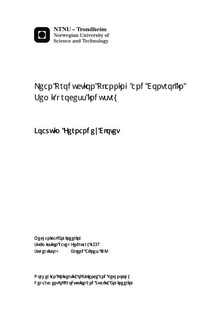| dc.description.abstract | Process Industries have traditionally been lumped together on the basis of producing non-discrete products. However, some of these industries are hybrid of process sector as at some point of their production process the products are discretized and treated as discrete units. This hybrid manufacturing environments can be classified as another type of manufacturing industries, under the name of semi-process industries. The notion of the discretization point which reflects this hybridity was firstly introduced by Abdulmalek, Rajgopal, and Needy (2006) and later highlighted by Pool, Wijngaard, and Van der Zee (2011).
Production planning and control environments are defined by the interaction of the customer demand, production process and product produced. Although they are not totally dependent one from each other, these three elements are closely related. This dependency was already reflected in the traditional product-process matrix from Hayes and Wheelwright (1984), but the matrix captured an overall dependency without analysing in a more granular way. This matrix has been expanded and gained detail with the research of current classification for production planning and control and process manufacturing environments. With this information, manufacturing environments for semi-process industries have been studied and characterised.
Lately, manufacturing environments have been focusing their efforts on reaching levels of optimisation. Moreover, reducing waste on every one of their production steps and making their processes more flexible in order to accommodate wider demand variation and order fulfilment. Therefore, lean manufacturing methodologies have been implemented in manufacturing industries in order to reach these goals. Production planning and control tools (PPC tools) are between all these lean concepts a small portion which can have reliable profits. Applicability in discrete sectors has been widely demonstrated (Bokhorst & Slomp, 2010; Liker, 2004). On the other hand, applicability of lean methodologies on process sectors still remains behind due to the rigid properties of these sectors (i.e. inflexible equipment, long set-up and changeover times). Therefore, applying this manufacturing concepts and tools in semi-process environments can have an easier implementation. Scholars as Abdulmalek et al. (2006), Lyons, Vidamour, Jain, and Sutherland (2013) among others, have been studying and applying these concepts so far.
At this thesis, five traditional lean PPC tools are identified and studied to be applied in semi-process industries this being reflected at the product-process matrix. The tools analysed are Kanban pull production, Heijunka, Cyclic wheel planning, Takt time and Cellular manufacturing. From all these tools, cyclic planning methodologies (which include Heijunka and cyclic wheels between others) have been found the most effective lean PPC tool due to the high capacity of adaptation to different process and product profiles. To apply these tools, not only the process characteristics but also the product demand segmentation in terms of runners/repeaters/strangers is important. That is because each product portfolio requires a different planning and replenishment approach. | |

